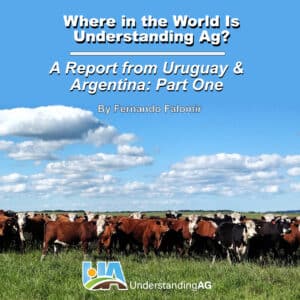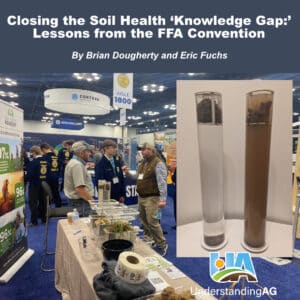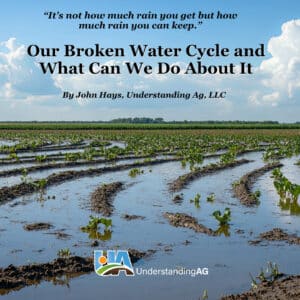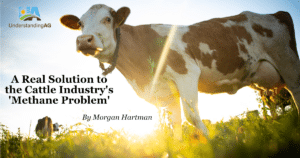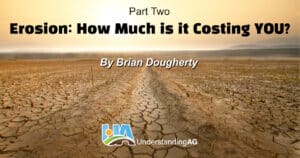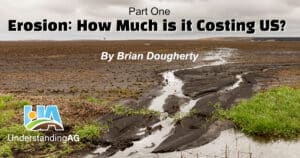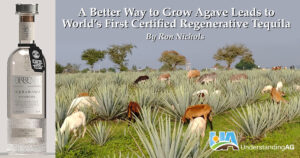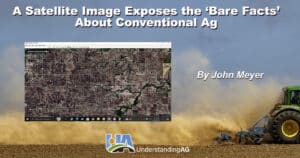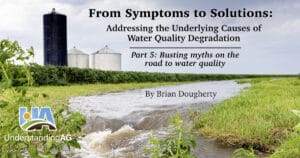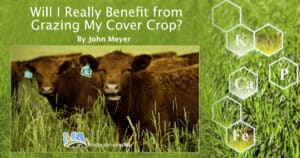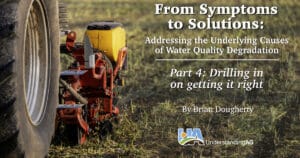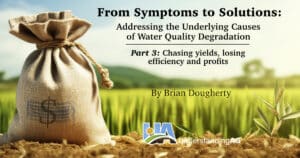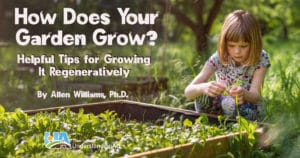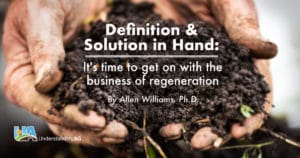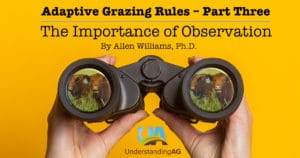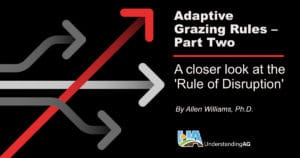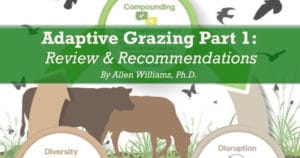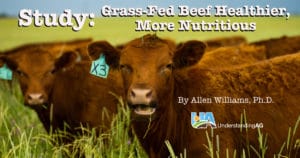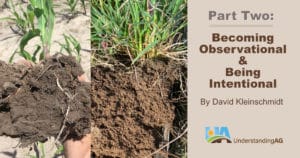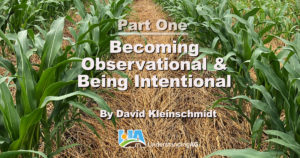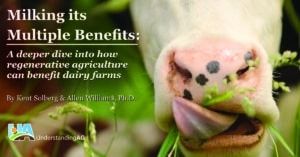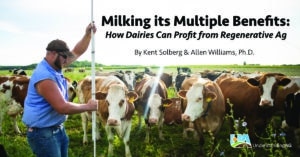“When I was a young kid, my grandfather had a painting of a Gaucho riding a horse at full gallop chasing down a cow in the Patagonia Steppe. The Gaucho was swinging a set of ‘boleadoras; above his head, which is the traditional tool to help them wrangle cattle. Ever since I first saw that painting, […]
Read MoreWe recently had the privilege of attending the National Future Farmers of America convention in Indianapolis, Indiana to represent Understanding Ag. Mingling with a sea of over 70,000 kids wearing the classic blue and gold FFA jackets with their home states emblazoned across the back is an unforgettable experience. It brought back memories of my […]
Read More“It’s not how much rain you get but how much rain you can keep.” As I write this in late Oct 2024, we have had no measurable rainfall for the entire month here in west-central Indiana. If you look at the August-through-October total rainfall here, we have not been this dry since 2010, and we’ve […]
Read MoreThe headline in The Washington Post article, published August 25, 2024, proclaimed “Scientists may have found a radical solution for making your hamburger less bad for the planet.” The article, written by Shannon Osaka and Emily Wright, examined research currently being conducted at the University of California-Davis using gene editing techniques on rumen microbes to […]
Read MoreIn part one, I outlined some of the societal challenges linked to soil erosion and poor soil function. Now let’s take a look at some of the economic costs and benefits of addressing erosion on farms and ranches. To determine the cost of erosion, first we must assign a value to soil. In truth, topsoil […]
Read MoreSoil erosion has been one of the most persistent challenges humanity has faced since the advent of agriculture over 10,000 years ago. Loss of productive capacity of the supporting land base contributed to the collapse of numerous civilizations during that time. Poor grazing practices and tillage were the main causes of land degradation historically and […]
Read MoreLife is short so embrace change.” That’s the “distilled” philosophy Rodrigo Mestas brings to his tequila business, his regenerative agriculture management style and his outlook on life. In the acres he’s transitioned to regenerative agriculture, Mestas allows naturally occurring cover crops to emerge between the rows of the agave, and then grazes livestock- including […]
Read MoreI pulled this image up on GoogleEarth yesterday. The photo below shows an area 12.5 miles wide, by 6.5 miles vertically, much of it in Rock Dell Township, Minnesota where our farm is. Hayfield is in the upper left-hand corner. The green area in the middle is along Hwy 30, and at the top is […]
Read MoreIn Part Four, I discussed the importance of keeping living roots in the soil and avoiding overapplication of nutrients at the wrong time. In this final post I will examine nitrogen sourcing options and how plants acquire nutrients in a healthy soil. To understand what the ‘right source’ of nitrogen is, we first need to […]
Read MoreGod designed the world to function as a perpetual motion machine. If done right, it should always be building fertility, not extracting it. But you have to understand the principles of soil health, and the four ecosystem processes, in order to achieve that outcome. While many individuals are content with simply “growing a cover crop” […]
Read MoreIn Part Three, I reviewed the concept of using marginal nitrogen use efficiency and zero N check strips as tools to evaluate application rates. Now I will shift the focus to problems with overapplication, how to determine the right timing for application, and the consequences of not doing so. The fastest way to diminish the […]
Read MoreIn business, it all comes down to profit. In farming, profit comes down to things we can’t control like the weather and the markets, and the things we can control like our management decisions. One of those key management decisions is determining how much nitrogen to apply to our crops. In part two of this […]
Read MoreOne of the true joys of getting to work with so many farmers and ranchers as they move down the regenerative path is watching as they learn how to work in synchrony with nature. It’s especially gratifying when they send along letters that describe their regenerative experiences, like the one I recently received from Daniel […]
Read MoreUnderstanding Ag works with a significant number of gardening operations around the U.S. and has developed several helpful tips for regenerative gardening that you and your garden can benefit from, too. I hope you’ll consider incorporating many of these regenerative principles and practices in your garden this year. When you do so on a planned, […]
Read MoreAs a regenerative farmer and consultant, I see the enormous potential of restoring the health of our living and life-giving soil. However, I also see the potential for regenerative agriculture to become a broad and misleading brush by which some companies can disingenuously greenwash their sustainability efforts, confuse consumers and devalue the currency of legitimate […]
Read MorePictured here is the De Leon family: Gil and Holly, with children Emanuel, Iliana, Celina, Christian, Valentina and Mariana. For Gilberto (Gil) De Leon, life is all about “service.” A U.S. Army Captain (promotable) with more than 17 years in military uniform, and multiple tours as a combat arms officer in Afghanistan and Iraq with […]
Read MoreThe Three Rules of Adaptive Stewardship TM have been proven to work in every region of North America and in many other parts of the world. Results are similar relative to differences in soil type, precipitation, temperature, and other environmental differences. The KEY to successful adaptive grazing is KEEN OBSERVATION. Since adaptive grazing is not […]
Read MoreIt is important to note that every living cell and organism has a memory and responds to prior experiences accordingly. So, soil microbes have a memory and respond to prior grazing or other management practices. Plant cells have a memory. Animal cells have a memory. If similar practices are employed year after year, then the […]
Read MoreThe Three Rules of Adaptive StewardshipTM are: Rule of Compounding Rule of Diversity Rule of Disruption The Rule of Compounding follows the concept that every management decision or practice applied creates a series of compounding and cascading effects that are either positive or negative in nature. There never are any singular impacts and they are […]
Read MoreResearch performed by Dr. Stephan Van Vliet, Department of Nutrition, Dietetics and Food Sciences, Utah State University, and the Bionutrient Food Association, found that grass-finishing, compared to conventional grain finishing, increases a wide variety of health-promoting compounds in meat and improves animal health. Phytochemical richness of meat is directly related to the finishing diet of […]
Read MoreIn my previous post, I discussed building soil aggregation and how this can help to address some of the problems growers face today. Those stable aggregates are created by living plants that release root exudates to feed a diverse quorum of microbes in the soil. The more the diverse the living plants are, the more […]
Read MoreWhen many people think of cover crops on their farms, their initial thoughts circle around soil erosion, either via wind or rain. Many of the programs through the NRCS and Soil and Water Conservation Districts that have anything to do with cover crops pertain to erosion problems as well. But those who have been using […]
Read MoreIn our previous article, we provided an overview list of the many potential benefits dairy farms are observing as they move into regenerative agriculture. Dairy farms are uniquely suited to the principles of adaptive management because they have multiple livestock classes that can utilize a variety of feedstuffs. This provides opportunities for greater plant diversity […]
Read MoreFarmers often ask, “How can my farm benefit from moving to regenerative agriculture?” We most pointedly hear this from dairy farmers. With a seven-day-per-week workload, dairies have developed schedules designed around getting all the chores done. They feel that unless something offers the promise of additional milk or crop/forage yield, they struggle comprehending how to […]
Read More
